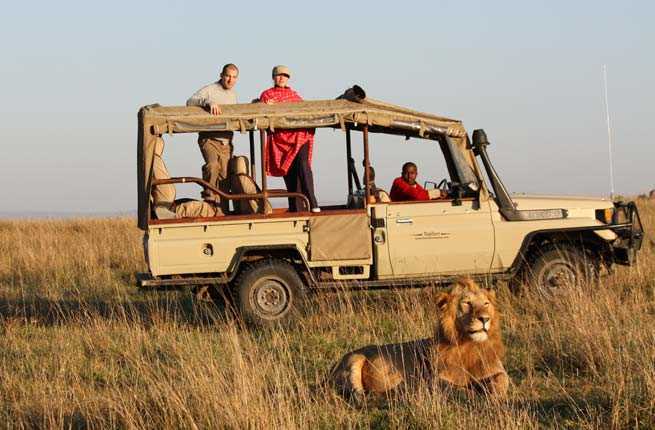When considering Kenya safari packages, visitors are spoilt for choice. These packages often include visits to world-renowned locations such as the Maasai Mara, famous for its annual wildebeest migration, and Amboseli National Park, offering breathtaking views of Mount Kilimanjaro. Lake Nakuru’s vibrant flamingo population adds another dimension to the safari experience, showcasing Kenya’s remarkable biodiversity.
For those planning their Kenyan adventure, local online travel agencies like Tribal Tourist offer expertly curated itineraries that cater to various preferences and budgets. These agencies provide invaluable local knowledge, ensuring visitors make the most of their safari experience while supporting sustainable tourism practices. Whether you’re a first-time safari-goer or a seasoned wildlife observer, Kenya’s natural splendor and warm hospitality make it an ideal choice for an unforgettable African adventure.
The Importance of Timing
Timing your Kenya safari is crucial for an optimal experience. Seasonal variations significantly impact wildlife behavior, migration patterns, and overall visibility. During the dry season, animals congregate around water sources, making them easier to spot. Conversely, the wet season brings lush vegetation and newborn animals, offering unique photographic opportunities.
The Great Migration, a spectacular event in which millions of wildebeests and zebras traverse the Masai Mara, occurs between July and October. This period offers unparalleled wildlife viewing and attracts larger tourist crowds.
Weather conditions play a vital role in your safari experience. The dry seasons (June to October and January to February) offer comfortable temperatures and minimal rainfall, which is ideal for game drives. However, the wet seasons (March to May and November to December) bring dramatic landscapes and fewer tourists.
Understanding these factors allows you to align your visit with your specific interests: witnessing specific animal behaviors, avoiding peak tourist seasons, or experiencing particular climatic conditions. Ultimately, thoughtful timing can significantly enhance your Kenyan safari adventure.
Exploring Kenya’s Dry Season
Kenya’s dry season, typically from June to October and briefly in January and February, offers prime conditions for an unforgettable safari experience. During these months, the landscape transforms, with vegetation thinning out and water sources becoming scarce. This environmental shift increases wildlife concentration around remaining water holes, making animal spotting significantly easier for visitors.
The dry season coincides with nature’s most spectacular event: the Great Migration. Millions of wildebeest, zebras, and other herbivores traverse the Serengeti-Mara ecosystem for fresh grazing lands, creating breathtaking scenes as they cross rivers teeming with crocodiles.
With reduced rainfall, roads become more accessible, allowing extensive game drives. The clear skies and mild temperatures provide ideal conditions for photography, ensuring visitors capture stunning memories of Kenya’s diverse wildlife.
While the dry season offers peak safari opportunities, it’s worth noting that prices may be higher, and famous lodges can book up quickly. Planning well in advance is advisable to secure the best possible safari experience during this sought-after period.
Wet Season Safari
The wet season in Africa, typically from March to May and November to December, offers a unique safari experience that many travelers overlook. During these months, landscapes transform into lush, verdant expanses, creating a photographer’s paradise. The rains dramatically change the scenery, with once-dry riverbeds flowing anew and parched plains bursting into vibrant greenery.
Bird-watching enthusiasts will find this period particularly rewarding as migratory species flock to the rejuvenated wetlands. The skies come alive with diverse avian visitors, allowing twitchers to spot rare and beautiful species.
Another highlight of the wet shoulder season is the chance to witness newborn animals. Many species time their births to coincide with the abundant food that follows the rains. Visitors may be fortunate to see wobbly-legged wildebeest calves or playful lion cubs, offering heart-warming moments and exceptional photographic opportunities.
The wet season presents an added advantage for the budget-conscious traveler: lower prices. Many lodges and camps offer reduced rates during this period, making it an excellent time to experience a luxury safari at a fraction of the cost.
A wet season safari promises a refreshing perspective on Africa’s wildlife and landscapes, away from peak season crowds.
Seasonal Wildlife Highlights in Kenya
Kenya’s diverse ecosystems offer spectacular seasonal wildlife highlights throughout the year.
Perhaps the most renowned spectacle is the Great Wildebeest Migration, where over a million wildebeest, zebras, and gazelles traverse the Maasai Mara between July and October. This awe-inspiring event features dramatic river crossings and provides excellent opportunities for big cat sightings as predators take advantage of the abundant prey.
In the Rift Valley, Lake Nakuru and Lake Bogoria transform into a sea of pink as vast flocks of flamingos arrive to feed on algae, typically peaking between June and September. Seeing these vibrant birds against the backdrop of alkaline lakes is truly mesmerizing.
Elephant herds are mainly active during the dry season from June to October, congregating around water sources in Amboseli and Tsavo National Parks. This period offers unparalleled views of these majestic creatures against the iconic backdrop of Mount Kilimanjaro.
Wildlife enthusiasts should note that while these highlights are generally seasonal, nature’s timing can be unpredictable. It’s always advisable to consult with local experts or tour operators for the most up-to-date information on wildlife movements and the best times to visit specific regions.
How to Choose the Best Time?
Selecting the optimal time for your Kenya safari requires careful consideration of several factors.
- Firstly, your personal preferences play a crucial role; some travelers prefer dry seasons for easier wildlife spotting, while others enjoy the wet season’s lush landscapes.
- Budget considerations are equally important, as peak seasons often come with higher prices for flights and accommodation.
- Your specific wildlife interests should also guide your decision. For instance, if you’re keen on witnessing the Great Migration, plan your visit between July and October. However, each season offers unique wildlife viewing opportunities, so research the behavior of your favorite animals.
- Accommodation availability is another crucial factor. Famous lodges and camps can be booked quickly, especially during peak seasons, so planning well in advance is advisable. Consider balancing good wildlife viewing and more affordable rates.
Ultimately, the best time for your Kenya safari depends on a combination of these factors tailored to your needs and expectations.




